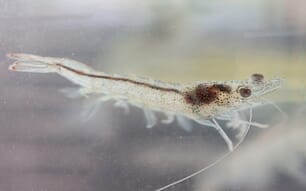The ruddy pigmentation of the fish flesh brought about by astaxanthin is considered an important consumer criterion of quality.
Wild fish acquire their characteristic salmon flesh colour from astaxanthin found in the single-celled organisms they eat, reports BTimes.
Owing to the high demand for astaxanthin in animal feed, particularly aquaculture and poultry (for egg yolk colour enhancement), astaxanthin is chemically synthesised on a large scale.
Astaxanthin is found naturally in certain plants. The yeast Phaffia rhodozyma and the microalgae Haematococcus pluvalis are the only microorganisms able to biosynthesise astaxanthin in appreciable yields and have gained considerable interest as sources of natural astaxanthin.
"Usually, wild fishes and prawns get their astaxanthin dietary ration from crustaceans and other carotenoid-containing-organisms, but when being bred in cages they do not have access to these natural carotenoid sources and, therefore, they do not obtain attractive red colour unless astaxanthin is supplied in their feed," said Prof Dr Darah Ibrahim from Universiti Sains Malaysia.
She said this product consists of yeast cell Xanthophyllomyces dendrorhous m20, which contains sufficiently high concentration of astaxanthin.
"The biomass containing natural astaxanthin that we produced not only act as an astaxanthin source but also as a protein source," she said.
Prof Dr Darah said at the same time, it acts as an antioxidant that gives added advantages for sustaining health or human consumption.
The target market for the product includes the aquaculture industry such as fish feed mill operators, fish and prawn farming operators and also ornamental fish farmers.



